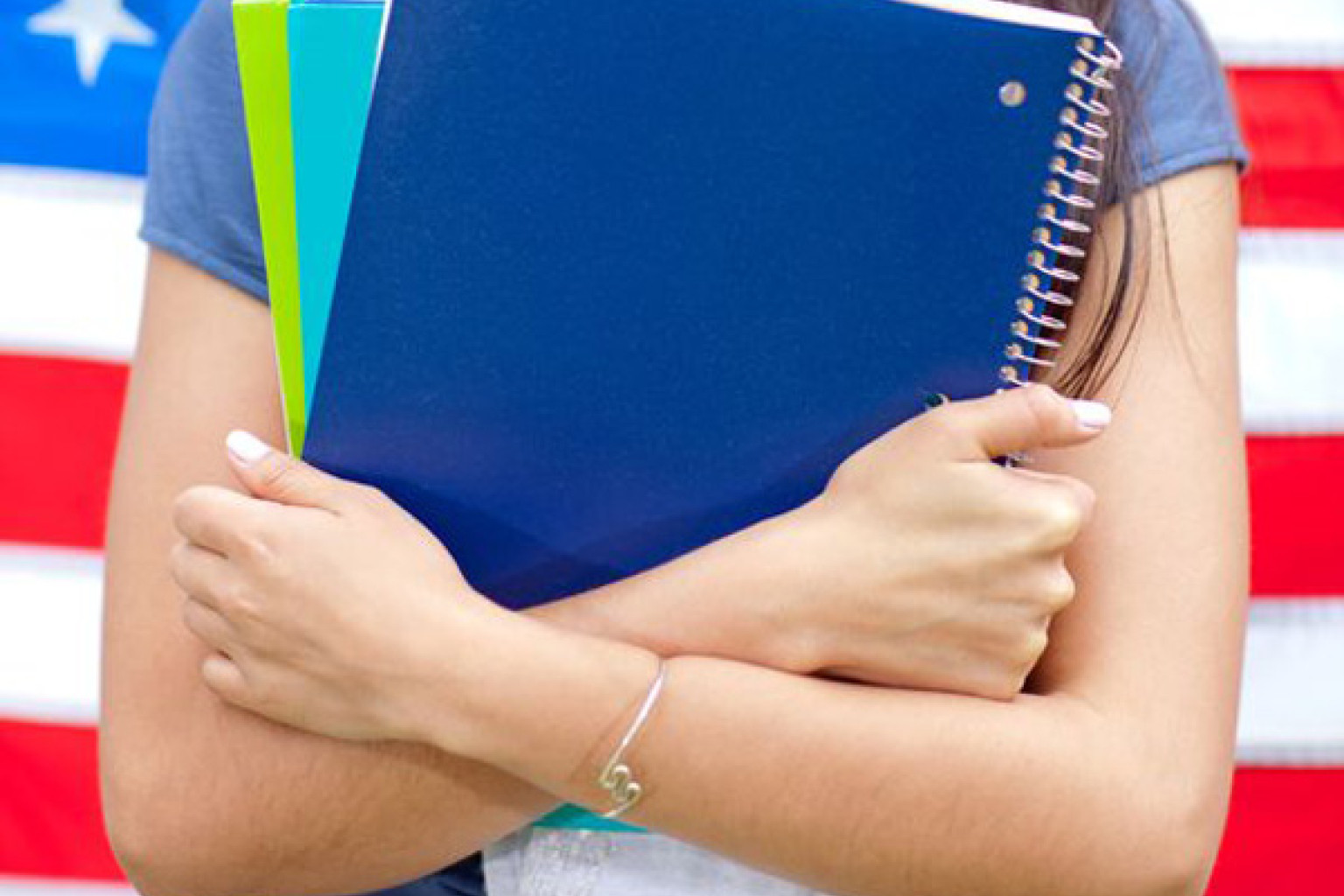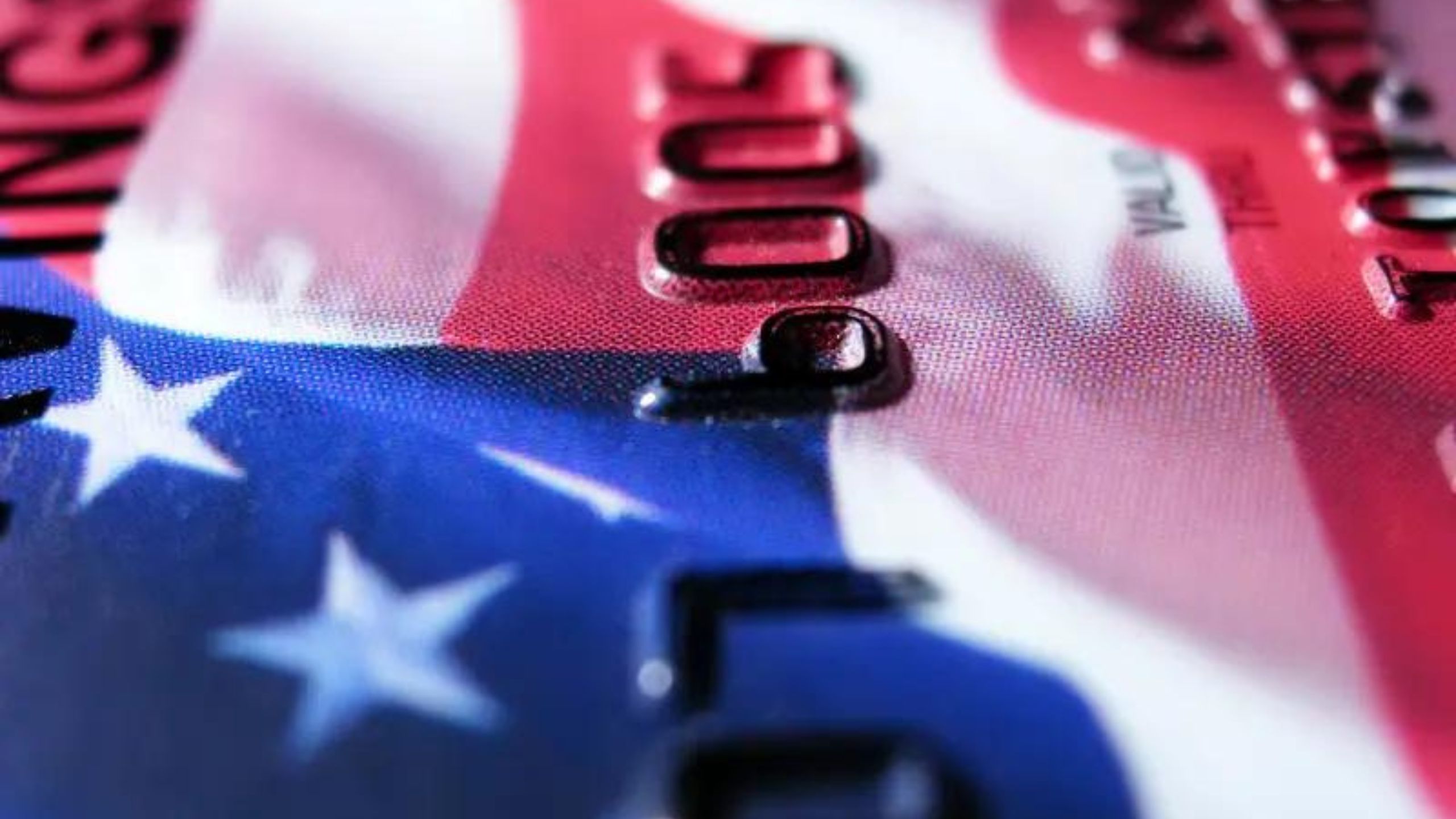M-1 Visa ermöglichen den Besuch einer anerkannten nicht-akademischen oder berufsbezogenen Bildungseinrichtung in den Vereinigten Staaten. Das M-Visum ist z. B. erforderlich, wenn eine Flugschule in den USA besucht werden soll. Wenn Sie eine berufsbegleitende Aus- oder Weiterbildung in den Vereinigten Staaten anstreben, stehen wir Ihnen gerne beim M-1 Visumantrag zur Seite!
M-1 Visa berechtigen zum USA-Aufenthalt im Rahmen eines nicht-akademischen Studienprogramms, beispielsweise wenn nicht an einer Hochschule oder Universität studiert wird. Wer also eine berufsbegleitende Aus- bzw. Weiterbildung anstrebt oder Abendkurse belegen möchte, benötigt ein Visum der Kategorie M-1.
ACHTUNG: M-1 Visa berechtigen nicht zur Teilnahme an Sprachkursen. Hierfür könnte möglicherweise ein F-1 Visum infrage kommen.

Die Beantragung eines M-1 Visums ist an mehrere Bedingungen geknüpft.
1. SEVIS-Registrierung der Bildungseinrichtung
SEVIS steht für Student and Exchange Visitor Information System. SEVIS ist eine Online-Datenbank der US-Regierung, mithilfe derer das US-Heimatschutzministerium, kurz DHS, und das US-Außenministerium, kurz DOS, die Daten aller M-1 Visuminhabende, die sich in den Vereinigten Staaten aufhalten, einsehen können.
2. Ausstellung des I-20 Formulars
Die SEVIS-Registrierung ist erforderlich, damit das I-20 Formular ausgestellt werden kann, welches bei M-1 Visa Beantragungen im US-Konsulat vorgezeigt werden muss. Es ist zu beachten, dass nicht alle Bildungsreinrichtungen dazu berechtigt sind, das I-20 Formular auszustellen. Es muss sich also bereits im Vorfeld erkundigt werden, ob die anvisierte Bildungseinrichtung auch eine SEVIS-Registrierung besitzt. Nachlesen kann man dies auf der offiziellen Webseite der US-Behörden
3. Absicherung der Finanzierung
M-1 Antragstellende müssen die Finanzierung der Ausbildung und der Lebenshaltungskosten durch Eigenmittel oder durch Stipendien nachweislich absichern können.
4. Nachweis der Rückkehrintention
M-1 Antragstellende müssen einen festen Wohnsitz im Heimatland nachweisen und ggf. weitere Rückkehrintentionsnachweise erbringen.
Wenn Sie sich unsicher sind, ob Sie das M-1 Visum beantragen können, holen Sie sich eine Einschätzung von unseren Visa-Expert:innen.

1. Rechtzeitige Antragstellung
Anträge auf M-1 Visa können maximal 365 Tage vor Beginn der Ausbildung gestellt werden. Da die reguläre Antragstellung allerdings mit langen Wartezeiten und Bearbeitungszeiten verbunden sein kann, empfiehlt es sich, das M-1 Visum so früh wie möglich zu beantragen.
2. Persönlicher Interviewtermin
Antragstellende müssen in der Regel persönlich im Rahmen eines Interviewtermins bei einem der zuständigen US-Konsulate vorstellig werden. Hier werden unter anderem folgende Dinge abgefragt:
Die Beantragung erfolgt üblicherweise im US-Konsulat des Landes, in dem die Antragstellende ihren Lebensmittelpunkt haben.
ACHTUNG: Die Pflicht zum persönlichen Erscheinen im US-Konsulat ist für M-1 Antragstellende unter bestimmten Voraussetzungen ausgesetzt. Bitte prüfen Sie im Einzelfall, ob Sie von dieser Sonderregelung Gebrauch machen können.
3. Genehmigung des Antrags
Antragstellende von M-1 Visa erfahren in der Regel am Tag des Interviews, ob das Visum genehmigt wird. Nach der Genehmigung wird den jeweiligen Antragstellende der Reisepass mit dem M-1 Visum üblicherweise nach fünf bis zehn Werktagen zugestellt.
Wie hoch die Kosten für US-Visa sind, hängt davon ab, welches Visum beantragt wird. Grundsätzlich gilt: Je mehr Antragsschritte erforderlich werden und je mehr US-Behörden involviert sind, desto teurer ist die Visumbeantragung. Die Antragsgebühren für US-Visa können somit sehr verschieden sein.
Wer ein Visum für die USA in einem US-Konsulat bzw. einer US-Botschaft beantragt, muss folgende Gebühren zahlen:

Bei Antragsverfahren über die US-Einwanderungsbehörde (USCIS), z. B. Anträgen auf US-Arbeitsvisa, fallen weitere Kosten an.
Nähere Informationen über die unterschiedlichen Visagebühren, weitere mögliche anfallende Kosten und die aktuellen Zahlungsmethoden finden Sie auf unserer Gebührenseite.
Das M-1 Visum wird i. d. R. auf ein Jahr erteilt. Der Aufenthaltsstatus in den USA vor Ort richtet sich nach der im I-20 Formular vermerkten Dauer der Weiter- bzw. Ausbildung. Sollte die Ausbildung länger dauern als vorgesehen, kann eine Verlängerung von bis zu 12 Monaten bei der jeweiligen Bildungseinrichtung beantragt werden. Außerdem ist es möglich, mit dem M-1 Visum bereits 30 Tage vor Beginn der Ausbildung in die USA einzureisen und bis zu maximal 30 Tage nach Abschluss der Ausbildung noch in den Vereinigten Staaten zu bleiben.
Ehepartner und unverheiratete Kinder unter 21 Jahren können für denselben Zeitraum wie der Hauptantragstellende ein abgeleitetes M-2 Visum erhalten. Erreichen die Kinder die amerikanische Volljährigkeitsgrenze, müssen sie ihren Nichteinwanderungsstatus wechseln oder das Land verlassen. Eine Arbeitsaufnahme ist den Familienangehörigen nicht gestattet. Die Beantragung einer allgemeinen Arbeitserlaubnis (Employment Authorization Document, EAD) ist unter dem M-2 Status somit nicht möglich. M-2 Visuminhaber können jedoch eine öffentliche/private Bildungseinrichtung besuchen (Kindergarten bis Highschool).
Soll eine höhere Bildungseinrichtung (z. B. Universität) besucht werden, muss ein eigenständiges F-1 Visum beantragt werden.
Die Gebühren für die Beantragung eines Visums sind je nach Kategorie ganz unterschiedlich und sie können u. a. aufgrund von Wechselkursschwankungen regelmäßig steigen oder sinken. Jeder Antragsteller sollte sich daher im Vorfeld der Beantragung über die aktuell geltenden Gebühren informieren. Wir erklären an anderer Stelle ausführlich alles Wissenswerte über die Kosten eines US-Visums.
Die Beantragung eines US-Visums muss über die offiziellen US-Behörden, z. B. die US-Konsulate und US-Botschaften, erfolgen. Dabei wird der eigentliche Visumantrag zwar online gestellt, allerdings muss fast ausnahmslos jeder Antragsteller persönlich in das Konsulat zum Visa-Interview. Bei einigen Arbeitsvisa ist es mitunter notwendig im Vorfeld des konsularischen Antragsverfahrens umfangreiche Akten postalisch an die US-Behörden in die USA zu senden.
Wir beraten und unterstützen Unternehmen und Privatpersonen in allen Fragen zur Visumbeantragung. Lesen Sie an anderer Stelle mehr über die Beantragung eines US-Visums.
Einige Universitäten oder Hochschulen in den USA verlangen von ihren Studenten die Vorlage der Social Security Number. Allerdings erfolgt im Normalfall keine Ausstellung der Nummer für Personen, die sich mit einem F-1, M-1 oder J-1 Visum temporär in den USA aufhalten. Die Hochschulen sollten in diesem Fall in der Lage sein, den betroffenen ausländischen Studenten eine andere Identifikationsnummer zuzuordnen.
Falls Sie eine Arbeitsstelle aufnehmen wollen, die im Rahmen des jeweiligen Studentenvisums gestattet ist, können Sie eine Social Security Number beantragen.
Nein. M-1 Visa berechtigen lediglich zum Besuch einer nicht rein-akademischen Bildungseinrichtung. Studienprogramme wie berufsbegleitende Weiterbildungen oder Abendkurse zählen zum Beispiel zu nicht-akademischen Programmen.
Ja eine Verlängerung bzw. Neubeantragung des M-1 Visums ist möglich. Dauert die Ausbildung länger als vorgesehen, kann eine Verlängerung von bis zu 12 Monaten bei der jeweiligen Bildungseinrichtung beantragt werden.
Nein, Global Entry ist nicht ausnahmslos mit allen US-Visa nutzbar. Wenn Sie Inhaber:in eines der folgenden Visa sind, dann sind Sie von Global Entry ausgeschlossen:
|
|
|
Ehepartner:innen und unverheiratete Kinder unter 21 Jahren erhalten für denselben Zeitraum wie die jeweiligen Hauptantragsteller:innen ein abgeleitetes J-2 Visum und dürfen damit in die Vereinigten Staaten reisen.
Die US-Aufenthaltsdauer richtet sich nach der im I-20 vermerkten Dauer der Weiter- bzw. Ausbildung, darf aber grundsätzlich nicht ein Jahr überschreiten. M-1 Visa Inhabern ist es aber erlaubt, bereits 30 Tage vor Programmbeginn in die USA einzureisen.
Anschließendes praktisches Training
Manche M-1 Programme schließen ein praktisches Trainingsprogramm mit ein. Die Zeit des praktischen Trainingsprogramms zählt nicht zu der einjährigen Aufenthaltsdauer. Ein Monat praktisches Training pro abgeschlossene viermonatige Weiter- bzw. Ausbildungseinheit ist erlaubt, bis maximal sechs Monate.
Verlängerungen der Weiter- bzw. Ausbildung gegebenfalls möglich
Der Inhaber eines M-1 Visums darf die Dauer seiner Weiter- bzw. Ausbildung verlängern bis zu einer Gesamtzeit von drei Jahren. Verlängerungen sind aber nur dann möglich wenn:
Abgesehen vom Formular I-20, müssen Antragssteller eines M-1 Visums auch folgendes nachweisen:
Inhaber eines M-1 Visums dürfen keinerlei berufliche Tätigkeiten ausüben. Ausnahme bilden vorübergehender Tätigkeiten im Rahmen eines Praktikums. Begleitende Familienangehörige, die ein M-2 Visa erhalten, dürfen auch keine Arbeit aufnehmen. M-2 Ehepartner und Kinder können jedoch unter Umständen Studieren (siehe "Welches Visum erhalten begleitende Familienangehörige beim M-1 Visum?")
Begleitende Ehepartner und unverheiratete Kinder bis 21 Jahren erhalten auf Antrag einen abgeleiteten Status und damit ein M-2 Visum. Kinder die während ihrer US-Aufenthalt 21 Jahre alt werden oder heiraten, müssen ihren Nichteinwanderungsstatus wechseln oder das Land verlassen.
Arbeit nicht gestattet
Mit diesem Visum ist es den Ehepartnern und Kindern allerdings nicht gestattet zu arbeiten, d. h. der Erwerb einer Allgemeinen Arbeitserlaubnis (Employment Authorization Document, EAD) in den USA ist ausgeschlossen (im Gegensatz zu anderen Kategorien wie L-1 oder E-1/E-2).
Studieren nur begrenzt möglich
Kinder dürfen eine "elementary" oder "secondary" Schule besuchen (Kindergarten bis Highschool). Soll eine höhere Bildungseinrichtung (z. B. Universität) besucht werden, muss ein eigenständiges F-1 Visum beantragt werden.
Ehepartner dürfen nur:
Möchte der Ehepartner ein Vollzeitstudium aufnehmen, muss er ein F-1 Visum beantragen.
Das M-1 Visum erlaubt den Besuch einer berufsbezogenen oder nicht-akademischen Bildungseinrichtung in den USA (z.B. eine Flugschule). Ein M-1 Visum erlaubt nicht den Besuch einer Sprachschule. Und die Bildungseinrichtung muss durch das Student and Exchange Visitor Program (SEVP) registriert sein.
Ja, auch zur Beantragung des M-Visums ist das I-20 Formular zwingend erforderlich. Das I-20 Formular muss von der jeweiligen Bildungseinrichtung in den USA ausgestellt werden, wobei zu beachten ist, dass nicht alle Schulen berechtigt sind, das I-20 Formular auszustellen. Es muss also im Vorfeld geklärt werden, ob die anvisierte Bildungseinrichtung diese Berechtigung hat. Nachlesen kann man dies unter: http://studyinthestates.dhs.gov/school-search
In aller Regel erfahren Antragsteller bereits am Tag ihres Interviews, ob das Visum erteilt wird oder nicht.
In bestimmten Fällen erhält der Visumantragsteller nach einer gewissen Bearbeitungszeit ein Ablehnungsschreiben des Konsulats. Eine Ablehnung muss im Übrigen nicht begründet werden. Die Gründe hierfür können vielfältig sein und reichen – je nach Visumkategorie – von der Unterstellung einer Einwanderungsintention, über die Vermutung der illegalen Arbeitsaufnahme bis hin zu mangelhafter Antragsdokumentation.
Ist dies erst einmal geschehen, kann meist erst nach mehreren Monaten oder sogar Jahren ein neues Visum (erfolgreich) beantragt werden. Theoretisch besteht für den Antragsteller zwar keine Wartezeit bis zur nächsten Einreichung. Die Erfahrung zeigt allerdings, dass ohne eklatante Verbesserung der Voraussetzungen der jeweiligen Visumkategorie (z. B. Nachweis der Rückkehrintention ins Heimatland, finanzielle Mittel, Nachweis von beruflichem Spezialwissen etc.) eine erneute Antragstellung wenig sinnvoll erscheint.
Wir und unsere Partner nutzen Cookies, um personenbezogene Daten wie z.B. Browsing-Daten zu speichern und abzurufen, um z.B. Inhalte und Werbung bereitzustellen und zu personalisieren sowie die Verwendung der Website zu analysieren und das Benutzererlebnis zu verbessern. Sie erfahren mehr über die Zwecke, für welche wir und unsere Partner Cookies einsetzen, wenn Sie unten auf den Button „Cookie Einstellungen“ klicken. Hier können sämtliche Einstellungen auch geändert werden. Nachträglich kann man jederzeit seine Cookie-Auswahl überdenken oder seine Einwilligung widerrufen, indem man auf den Link zu den Cookie-Einstellungen im Footer unserer Webseite klickt. Beachten Sie bitte, dass das Blockieren einiger Cookie-Typen unsere Möglichkeiten zur Bereitstellung von auf Ihre Interessen zugeschnittenen Inhalten haben kann oder einige Funktionen der Webseite nur eingeschränkt zur Verfügung stehen.
Durch klicken auf “Alle Cookies akzeptieren” stimmen Sie unserer Nutzung und der Weitergabe Ihrer Daten an unsere Partner zu.